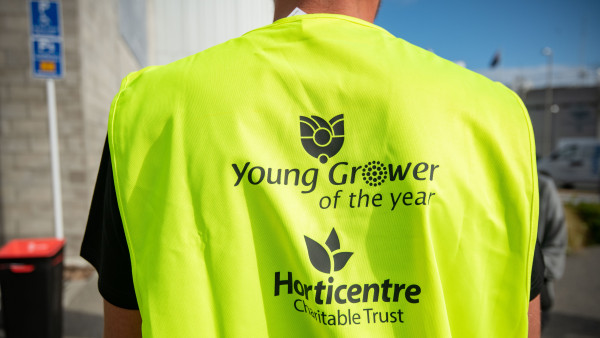Listening to and supporting young growers
17 August 2022
Recent events such as horticulture’s national Young Grower of the Year regional finals, and the Primary Industries Summit in Auckland, have given young people in the primary sector a profile and a voice.

At the summit, a discussion panel of young people from across the wider primary sector emphasised the role of older mentors. That is, someone with experience and a commitment to bringing young people on board, who made the time to encourage and guide, usually very early on in the young farmer or grower’s career. Quite often, this involvement started at secondary school, however, what was consistent was that the listening and guiding ear was readily available, as the young person traversed education and training options and early career choices.
Young Grower of the Year contestants all have to stand up and make speeches in front of a few hundred of the people they work with in our industry and their wider community. To most, it would seem that this is the most daunting task in the competition, as we all know few people relish the opportunity to speak publicly, no matter how often they do it…
While the speeches may vary in content, the focus is always on the industry’s future – what it could be like and how the various challenges – such as climate change, labour and changing consumer preferences – could be addressed.
Most contestants touch on the role of technology and automation to address these changes. However, while the speech makers may entertain or entice us with a futuristic vision full of drones, driverless tractors and disease resistant new varieties, they emphasise the role of the human being to direct the growing. They also worry about how automation and robotics could take away the pride that every grower takes in the produce that they grow, as an intersection of land, water, warmth and light.
The current government sees automation and robotics as the key to reducing our industry’s labour needs. It also believes that somehow, our industry has underinvested in this ‘solution’. Well, these Ministers and their advising officials can’t have visited a modern packhouse lately, where quality control, food safety, human safety and speed are all down to the millions that individual growers have invested and continue to invest in technology and automation advances.
Sure, crops like broccoli and asparagus are still picked by hand, but they are the world over because it is the most efficient way to harvest these crops. But even here, New Zealand growers are exploring the future, through the robotic asparagus harvester being developed through a partnership involving growers, the government, technology developers and university academic researchers.
Standing back
The Young Grower of the Year and events like industry summits provide us with the opportunity to stand back, reflect and think about the future. This is vital in an industry that requires considerable doing on a daily basis, which has been exacerbated over the past two plus years by Covid-19.
Young people – like all of us – have been affected by Covid. I think their optimism has been drained as they are even more worried about the future and New Zealand horticulture’s place in it.
What they do see however, is a future and a place for them in it. A future that will take advantage of research and development, and automation gains, but will always involve the grower as director and decision maker, as well as a key member of regional communities across New Zealand.
Events like the Young Grower also bring communities together, and this year all the regional awards nights have been oversubscribed as people are hungry for interaction and celebration, as well as reflection and food for thought.
It is perhaps a cliché to say our industry is in ‘safe hands’ and the ‘future looks bright’, but it is. And why? Because of the talented young people coming through, and their perspectives and commitment to growing the best produce in the world, while addressing all of the world’s challenges through future tools and techniques.
So how can we older industry members help? By making ourselves available, listening and guiding and helping map out the bright future that is New Zealand horticulture.
